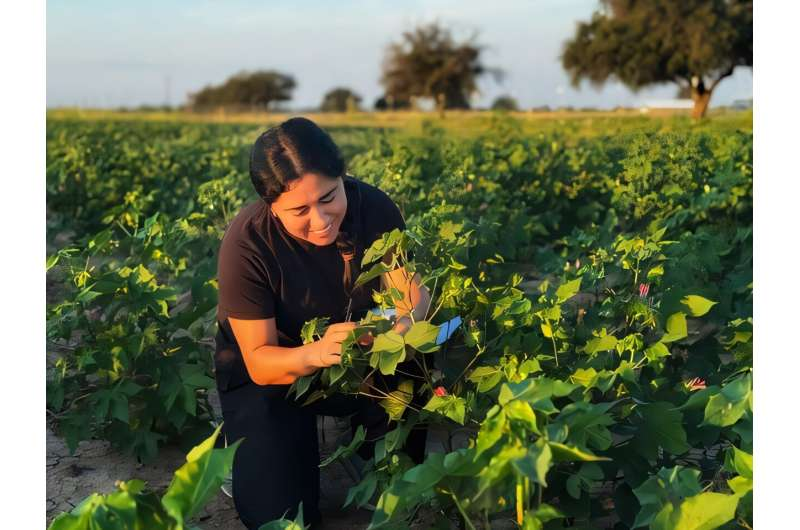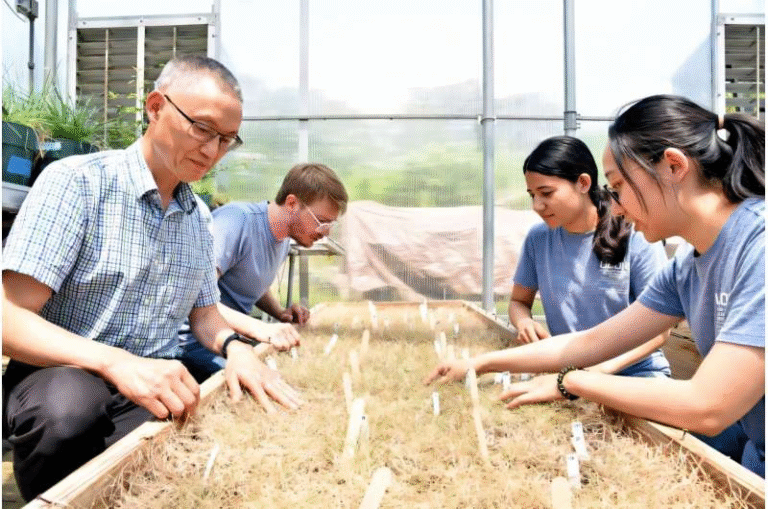Genomic Selection Emerges as a Key Technology for the Future of Global Agriculture

Developing high-yielding, nutritious, and climate-resilient crops is one of the most urgent challenges facing global agriculture today. With population growth, changing climates, and shrinking resources, traditional breeding methods are no longer fast enough to keep up. That’s where genomic selection (GS) comes in — a scientific approach that’s now moving from research labs into real-world breeding programs.
Recently, researchers from Iowa State University published a detailed paper titled “Genomic Selection: Essence, Applications, and Prospects” in The Plant Genome. The study explores how GS has evolved into a practical breeding tool, how it’s transforming crop improvement, and what the future might look like as new technologies like artificial intelligence and machine learning become integrated into the process.
What Is Genomic Selection?
Genomic selection is a breeding method that uses the genetic makeup of a plant to predict its traits — such as yield, disease resistance, or drought tolerance — even before the plant has fully grown. It works by creating predictive models that link genetic data (the plant’s DNA sequence) with phenotypic data (the observable characteristics).
Instead of spending years growing and testing plants in multiple environments, breeders can use GS to make data-driven predictions early in the breeding cycle. This means they can identify the most promising plants faster, reducing the time it takes to develop a new variety.
In practice, GS starts with a training population — a group of plants whose genetics and traits are both known. Scientists then use this dataset to build models capable of predicting how other plants will perform based only on their genetic information. Once the model is ready, it’s applied to a much larger group of plants that have been genotyped but not yet tested in the field. Those with the best predicted performance can be selected immediately for further breeding or release.
Why Genomic Selection Matters
The key advantage of GS is speed. Traditional breeding can take a decade or more to develop a new crop variety. GS shortens this by enabling selection early in the breeding cycle and reducing the number of generations needed to reach improvement goals.
The approach also allows scientists to evaluate thousands of plants at once, something impossible with traditional field testing. As a result, breeders can explore more genetic diversity, test more combinations, and make more informed decisions about which plants to cross.
These efficiencies directly translate into faster progress toward developing crops that can withstand climate change, drought, heat stress, and new pest pressures.
The study highlights that GS has already proven effective in major crops like corn, wheat, and soybeans — all critical for global food supply — and it’s now expanding into other crops like legumes and vegetables, which are essential for nutrition in developing countries.
How It Works Step by Step
The research paper outlines a clear process that GS follows:
- Training Population Design – Breeders first select a representative sample of plants that show diverse genetics and well-documented performance traits.
- Model Building – Using statistical and computational methods, they create models that relate specific genetic markers to plant performance.
- Prediction – The models are applied to untested plants to estimate their performance using only their genetic data.
- Selection – The top-performing plants based on predicted traits are selected for breeding or direct cultivation.
This process increases genetic gain — meaning it improves the rate at which desired traits accumulate over generations. It’s also flexible enough to handle complex traits that depend on multiple genes and environmental factors.
Integrating Technology and Data
The researchers emphasize that GS is part of a broader movement toward data-driven agriculture. In the coming years, it will increasingly integrate with phenomics (large-scale trait measurement), transcriptomics, metabolomics, and enviromics (environmental data).
By combining these data types, GS models can become even more accurate, predicting how plants will perform under various environmental conditions. This integration is especially important as the climate continues to shift unpredictably.
Moreover, advances in artificial intelligence and machine learning are revolutionizing how these models are built and refined. AI can uncover complex patterns within genetic and environmental data that human-designed models might miss, allowing for even more precise predictions.
Global Impact and the Need for Speed
As climate change threatens food production worldwide, the ability to quickly breed resilient crops is more critical than ever. Extreme temperatures, shifting rainfall, and new pest dynamics are making many traditional crop varieties less productive.
The Iowa State University team points out that genomic selection accelerates adaptation, helping breeders develop crops that thrive in future conditions rather than reacting to problems after they appear. This is a major shift from reactive to proactive breeding.
For example, by incorporating environmental variables into GS models, breeders can select plants that are not just high-yielding now, but also suited to future climates.
A Growing Field with Global Reach
Although GS began with large crops in developed nations, it’s spreading rapidly to other contexts. The method has already been adopted in animal breeding and is showing promise in forestry and horticulture.
However, adopting GS requires access to reliable genotyping technology, computing infrastructure, and skilled scientists. That’s why training the next generation of plant breeders is a big focus at Iowa State University and similar institutions.
Professor Jianming Yu, who leads the Raymond F. Baker Center for Plant Breeding at Iowa State, has emphasized that GS not only transforms breeding programs but also provides a learning platform for future scientists. Many of his former students, including Diana Escamilla, the paper’s lead author, now work in private industry, helping to implement these methods in real-world crop improvement.
Challenges and Limitations
Despite its advantages, GS isn’t perfect. Prediction accuracy can vary depending on the trait, the crop species, and the environment. For some traits controlled by many genes or influenced strongly by local conditions, the models can be less reliable.
Another major limitation is cost. Building large training populations and conducting high-density genotyping can be expensive. For developing countries or smaller breeding programs, this remains a barrier.
Additionally, models trained under one set of environmental conditions may not perform well in drastically different climates. That’s why scientists are now working to make GS models environment-aware, integrating long-term climate data to improve their adaptability.
What This Means for the Future
The publication of this comprehensive review marks an important milestone. It reflects how genomic selection has moved from an academic concept to an applied technology that’s actively reshaping agriculture.
In the coming decade, GS is expected to merge with automation, remote sensing, and advanced data analytics. Together, these tools could make plant breeding faster, cheaper, and more accurate than ever before.
For countries like India, Brazil, and many across Africa, GS could be especially transformative. By enabling faster crop adaptation to local climates, it can help farmers achieve better yields under increasingly unpredictable weather. The key challenge will be ensuring access to infrastructure, data, and training so that local breeding programs can take full advantage of the technology.
As the paper’s authors note, genomic selection is not just a technical tool — it’s part of a broader rethinking of how humanity will feed a growing population while coping with a changing planet.
Reference
Research Paper: Genomic Selection: Essence, Applications, and Prospects – The Plant Genome (2025)





